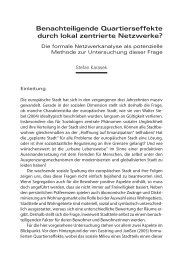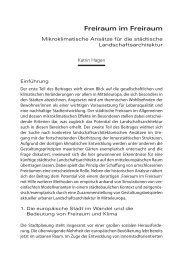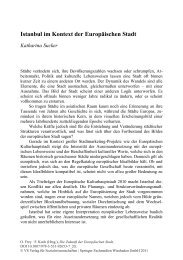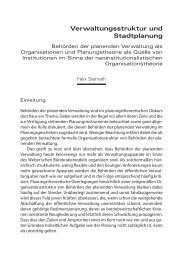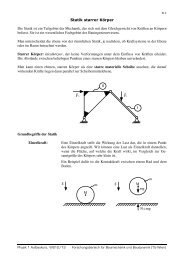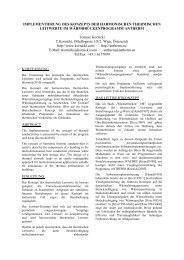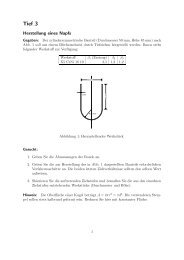Spectral characteristics of ultrashort pulses in Kerr-lens - TU Wien
Spectral characteristics of ultrashort pulses in Kerr-lens - TU Wien
Spectral characteristics of ultrashort pulses in Kerr-lens - TU Wien
You also want an ePaper? Increase the reach of your titles
YUMPU automatically turns print PDFs into web optimized ePapers that Google loves.
= (11)<br />
= (12)<br />
It should be noted, that <strong>in</strong> these equations w, — w8 = 1, and there is the pair-wise <strong>in</strong>teraction <strong>of</strong> the spectral<br />
components with<strong>in</strong> the wide enough generation spectrum.<br />
There are two ma<strong>in</strong> mechanisms <strong>of</strong> the generation <strong>of</strong> the <strong>in</strong>itial seed at the Stokes frequency for Eqs. (3). The<br />
first one is the spontaneous Raman scatter<strong>in</strong>g with the <strong>in</strong>crements <strong>of</strong> the scattered <strong>in</strong>tensity growth<br />
2 2 S<br />
wpw8n8 gj<br />
Xi nfl. ' (13)<br />
irc2 [1—exp(—_)]<br />
where n8 is the <strong>in</strong>dex <strong>of</strong> refraction at Stokes frequency, T is the temperature, and kB is the Boltzmann's constant<br />
13<br />
With this seed signal, the stimulated Raman scatter<strong>in</strong>g results <strong>in</strong> appearance and growth <strong>of</strong> spectral replicas <strong>of</strong><br />
the ma<strong>in</strong> oscillation pulse, shifted to the lower frequencies by the Raman frequencies 1Z.<br />
More significant source for Stokes component's amplification, however, is the broad-band pulse field itself. When<br />
the pulse pulse spectrum is wide enough to become comparable with the Raman frequency shift, the lower-frequency<br />
part <strong>of</strong> the spectrum can play a role <strong>of</strong> the Stokes component seed with respect to the higher-frequency part <strong>of</strong> the<br />
spectrum. The stimulated Raman scatter<strong>in</strong>g then transfers the energy form the higher-frequency components to the<br />
lower-frequency ones, result<strong>in</strong>g <strong>in</strong> the cont<strong>in</strong>uous red-shift <strong>of</strong> the pulse spectrum as a whole. As the field amplitude<br />
<strong>of</strong> the laser pulse significantly exceeds the spontaneous seed, the second mechanism strongly dom<strong>in</strong>ates over the first<br />
one. However, we <strong>in</strong>cluded both mechanisms <strong>in</strong> our model, because their <strong>in</strong>fluence on the pulse spectrum is quite<br />
different.<br />
Later on it is convenient to normalize the time to the <strong>in</strong>verse ga<strong>in</strong> bandwidth tg 2.25 fs and the <strong>in</strong>tensity to<br />
/9', result<strong>in</strong>g <strong>in</strong> the normalization <strong>of</strong> the field energy to (flt9)1. As already po<strong>in</strong>ted out, we analyzed the described<br />
above model <strong>in</strong> two ways: on the basis <strong>of</strong> distributed and discrete-element approaches. In the framework <strong>of</strong> the<br />
distributed model, we didn't consider the propagation through the <strong>in</strong>dividual laser element and supposed that the<br />
pulse envelope is formed by the overall net-dispersion <strong>in</strong> the cavity. As result we have a split-step scheme describ<strong>in</strong>g<br />
<strong>ultrashort</strong> pulse propagation from z to z + 1 transits:<br />
a(z', t)<br />
=f ...f a(z, t')C(t — t')L (t' t") A (t" — t"') G (t"<br />
— t") dt'dt"dt'"dt', (14)<br />
a(z+1,t)=a(z',t)exp (— 2 _iIa(zI,t)I2, (15)<br />
\ 1+oia(z',t)I I<br />
a(z + 1) = a(z)exp<br />
(_rf<br />
fa(z, t')2 dt' — Tcav/Tr — + Pamax (1 exp FTcav/Tr — F))<br />
where r = t9/(E3fl) = 0.00079 is the normalized ga<strong>in</strong> saturation parameter. The Green's functions A, L, C describe<br />
spectral bands <strong>of</strong> ga<strong>in</strong>, reabsorption and output loss, respectively (note, that the dispersion is already is <strong>in</strong>cluded <strong>in</strong><br />
(16)<br />
Proc. SPIE Vol. 4752 19<br />
Downloaded From: http://spiedigitallibrary.org/ on 04/12/2013 Terms <strong>of</strong> Use: http://spiedl.org/terms






